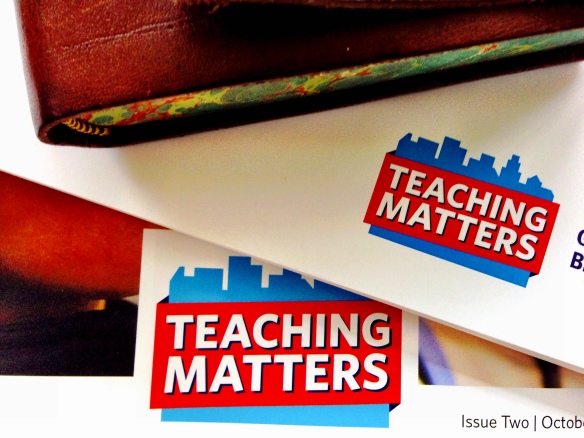Brilliant fire-coloured fall foliage frames Princeton’s historic Nassau Inn, where I sat in a booth with Charlotte Danielson, creator of the Framework for Teaching, and Cindy Tocci, executive director of the research arm of Educational Testing Service. Somewhere in the wooden table is Albert Einstein’s name, where he carved it when he was a visiting professor at Princeton. After explaining my school’s journey with our teacher growth model, we talked about coaching, the Framework for Teaching and the challenges of maintaining a reflective transformative professional culture.As our understanding of teaching expands and deepens, we need a vocabulary that is correspondingly rich, one that reflects the realities of a classroom where students are engaged in learning important content. Such a framework is valuable for veterans as well as novices as they all strive to enhance their skills in this complex work. ~ Charlotte Danielson, 2007
What is a coach?
One question raised was about the level of expertise of the coach: was conversation expertise enough, or was it more useful to also have content expertise? Our team of teacher coaches will often work with those outside their own area of expertise; this builds connections across school boundaries and allows the focus to be on pedagogy and the teacher’s own reflection, rather than on content. Another related question was raised about the potential space between a feedback-based (judgement given) approach to coaching and a reflection-cognition-based approach (no judgement given).
Charlotte challenged that “the opposite of judgement is not ‘do nothing’.” A collaborative approach was suggested as an alternative, in which teachers work together in a conversation to solve problems of practice or generate ideas for improvement, in which both teacher and coach are participating in the conversation as reflective educators. This speaks to some feedback we have had from teachers about their coaches not being ‘in’ the conversation and feeling that being Cognitively Coached was a one-sided unbalanced experience. In a coach-as-collaborator conversation there would need to be clarity around how much of the coach’s self it is appropriate to insert into the conversation, and how much content expertise the coach would need to meaningfully contribute to the discussion. There would still need to be restraint in resisting the urge to solve another’s problem for them and in the tendency to advise someone to teach using your own teaching preferences.
For us, I think the default position for the coach still needs to be the facilitator-of-another’s-thinking role, but there may be room for collaborative approaches to the parts of the conversation. Is collaboration appropriate for us in this context? Or perhaps peer collaboration in which teachers really work together in this way is an appropriate strategy for our teachers to pursue for their growth outside the official coaching conversations?
How to apply the Framework for Teaching?Charlotte and Cindy both noted that, while it is important to strive for accuracy when using the FFT, it is important that teachers, coaches and managers not get too caught up in the micro-analysis of detail, or looking for all the dot points. In fact, Charlotte has been developing a more holistic, less broken-down ‘clusters’ model which encourages teachers to look at the big ideas of the Framework, as an alternative to the original document. This alternative might be a way for our teachers to focus on the big things happening in their classrooms, rather than minute details of lessons.
How to develop understanding of the Framework for Teaching?
Master Coding of teaching videos was explained as a difficult but powerful exercise in developing an attuned, precise understanding of the Framework for Teaching and forging shared understandings of its language. Videos of classroom practice are useful for teachers in showing how the Framework components translate into practice, and for coaches in developing a common understanding of the Framework and what particular levels of performance look like in practice. Collecting video footage of lessons involves:
- Choosing a range of short lesson snippets (e.g. 10 mins) which relate to particular Framework components;
- Ensuring audio, as well as visual, quality is good, especially if students are doing group work (how do you capture what students are saying? How do you decide which groups to listen to?)
Videos should be watched and independently scored, followed by conversations around the reasons for those individual scores, in order to reconcile individual perspectives into a group agreement.
Videos of coaching conversations also have a place in helping coaches to deepen and develop their coaching practice.
These kinds of rigorous processes take time. Charlotte and Cindy both highlighted the importance of a slow implementation process in which groups develop their understandings together.
We also talked about using the Framework for Teaching for teacher self-reflection purposes and also for student reflection on the sorts of learning and environment of their classroom. My school has been experimenting with different teacher self-evaluation tool possibilities, as well as perception surveys, but hasn’t developed a concrete approach to asking students how their classrooms rate against the Framework for Teaching.
How to encourage regular reflection between formalised processes?
Another challenge raised was that of developing the learned skill of reflection in teachers in between these formalised reflective processes. How do we know teachers are reflecting regularly on their practice in order to grow their practice? How can we make sure teachers are asking themselves:
- What did my students learn today?
- What did I learn about my students today?
Any model of teacher growth has this challenge: outside of the formalised process, how do we encourage and ensure meaningful reflection and growth on an ongoing basis?
















